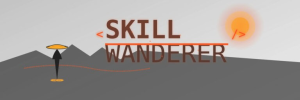In the last segment, we talked about the foundational dream of computing—the brilliant, early idea of building machines with gears and levers. But to get from a dream to the reality of the device that you are watching this on, we needed a new kind of power. We had to learn to compute with the electron itself.
At its core, computing with the electron is all about one thing: representing information. Because all software—every app, every website—ultimately boils down to simple zeroes and ones. The physical hardware is what allows us to manipulate those zeroes and ones at incredible speed.
So, how does a machine actually manipulate a zero and a one? The answer is elegantly simple: with a switch.
Think of a light switch. It has two states: on and off. We can assign the value of '1' to 'on' and '0' to 'off.' By controlling billions of these tiny electronic switches, a computer can represent and process any information that you can imagine.
Now that we have this fundamental building block, we'll go a level deeper. We'll explore not only the physical evolution of the switch itself, but also how these switches are combined to perform logical operations and calculations. By arranging them in clever patterns, you can make them add numbers, store information, and make decisions. This is the true foundation of how all computing works, and in this section, we'll start to see how it's done.
Now, I know these concepts can sound very complex (and they are!), but I want you to remember this course is all about the big picture. So, just knowing the name of the concept is enough. Don't worry if you don't get it all. We can certainly dive deeper in a later course.
So get ready to look under the hood and explore the physical machinery that brings the digital world to life.
